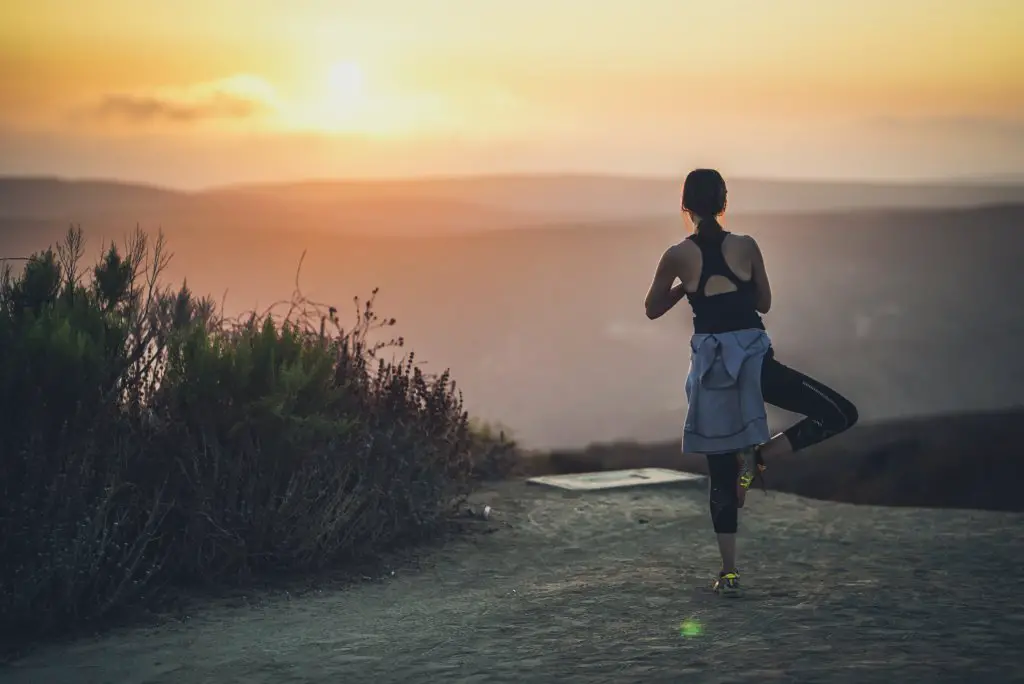Backpacking all around Europe can be a fulfilling and exciting adventure. However, the reality is that it also works your body. If you’re not prepared, the dream backpacking trip won’t even last for a mile. That’s why you have to get in shape before backpacking around Europe.
Getting in Shape for a Backpacking Trip in Europe
Prepare your body for backpacking. This will ensure you’ll have the energy you need to make the trip enjoyable. Making the trip without the preparation needed will only make the backpacking trip a tiresome activity.

1. Things to Consider Before Backpacking around Europe
Before going on a backpacking trip around Europe, you should know what muscles to target. Keep these and your entire body in shape so you will enjoy your trip. Overall, there are 4 main areas you want to focus on in order to make sure you are in great shape for your excursion:
- Improve Strength. Enhancing your muscles will greatly help for your backpacking trip. Aim for the major muscle groups you’ll constantly use in a backpacking trip. Muscles in your thighs, feet, and legs need to be strong to support your body weight when you walk for long hours on a trail.
- Enhance Endurance. Your body needs to last for a whole day. Backpacking can sometimes last an entire day and into the night. Aside from your lower body, train your shoulder and lower back . Get your body used to carrying heavy loads for long periods.
- Work on your Balance. Train your balance to build a stable base. You don’t know what trails you’ll be taking. It could be rough and uneven terrain. Having great balance lessens the load put on your body.
- Build up Cardio. You want your stamina to last until you finish the backpacking trail.
2. Make a Workout Schedule for Backpacking
You should be working out at least 8 weeks before you start your backpacking trip. When making your workout schedule you need to mix up the workout types for each week. Below are things that will guide you on what a workout schedule would look like.
- At least 2 days of strength training that aren’t consecutive
- At least 2 days of rest. If your body is asking for more rest then don’t hesitate to take a rest.
- At least 3 days of cardio exercises. The days shouldn’t be consecutive and keep doing it until 2 weeks before your backpacking trip.
- 2 weeks before the trip, instead of doing cardio, start training your body for long hiking. Do this by carrying at least 80% of the weight you’ll be carrying around your backpack trip and do long hiking for at least an hour.
- 2-3 days before the backpacking trip, get your well-deserved rest.
3. Choose a Workout Routine that Best Suits Your Backpacking Trip
When doing a workout routine, make sure your body is accustomed to it. Doing a workout wrong or overstepping your boundaries can only lead to injuries. These may cause you to cancel your trip.
When you start with your workout schedule be mindful of the following.
- Before starting your workout, do some stretching for about 5-10 minutes. Get your body warmed up.
- Do exercise that’s appropriate for your body. You don’t have to force some exercise routine that your body still can’t do. Do some light exercise first and let your body adjust.
- If you feel pain in your body during a workout, stop it right away. Take a rest, look into what’s wrong with your form. You may need to modify your exercise routine.
- Don’t overwork your body. Doing heavy exercise straight from the get-go can cause overfatigue and it’ll take a long time to recover. Do exercise at your own pace.
- Increase the load or repetition as you progress throughout your workout routine. If you’re lifting weights, try increasing the weight your lifting as you progress each day.
- Make sure you’re breathing properly during workouts. Inhale as you exert force and exhale as you return to the base position. When doing fast workouts, make sure you’re breathing regularly.
- After every exercise, rest for about 30-45 seconds. When you’re doing HIIT, get about 10-20 seconds of rest.
Below are some workout routines you can add and implement on your workout schedule:
1) Walk or Jog for Cardio
Your target goal should be able to walk for at least 10 miles a day without feeling too tired. Start by walking at least 3-4 miles a week or do some jogging or walking for 20 minutes. Gradually move up to an hour and track the distance you cover every time you jog or walk.
When you feel well-conditioned start doing some hiking. This will get your body used to natural terrains. Over the course of your trip through Europe, you will be walking and hiking through several different terrains, so it’s important to get used to this prior to starting your trip.
2) Single-Leg Deadlift Exercise for Strength and Balance
This exercise helps strengthen your hips and core muscles and improves your balance. You’ll be using a light dumbbell as a prop. If you don’t have one, you can use a kettlebell or other objects you can grip as an alternative. In general, using dumbbells and kettlebells are great training tools to use for backpacking, because they can help to mimic the weight you will be carrying while on your trip. Resources such as Simple Fitness Hub share several other ways that you can easily incorporate dumbbells into your workouts.

Here is how to do the single-leg deadlift:
- Have your body is bent forward with your back straight while one leg is behind your back.
- Carry the dumbbell in either your left or right hand while your other hand is pointed sideways.
- Go back to the base position (standing upright).
- Do this for at least 20 repetitions or until your body can take it. Gradually increase the frequency. Alternate between your left and right side.
3) One-Leg Squats for Strength and Endurance
This exercise works the muscles around your thighs. All you need is a wall to lean into and you’re good to go.
You can do this exercise by:
- Placing either your left or right hand on a wall.
- If you’re using your left hand to lean on the wall, bend your right leg behind you. You’ll be standing with your left leg only.
- Lower your body down by bending your left leg. The lower you hit the floor the better but be mindful of the limits of your body. Once you get used to it you’ll be bending so low down the floor with ease so don’t rush it.
- Hold the position for about 1-3 seconds and slowly get back up. Alternate between the left and right sides.
- Start with at least 10 repetitions or until your body can take it. Gradually increase the repetition each day.
4) Jump Squats for Strength and Endurance
Squats are great for building your lower body muscles, especially on the legs. Jumping will also help with strengthening your muscles for impact absorption.
To properly do this:
- Position your feet shoulder-width apart.
- Do a squat until your legs are parallel to the ground. If you’re having trouble, just do a squat you’re comfortable with. You’ll gradually get flexible and will be able to do it more properly.
- On squat, do a jump by pushing your heels towards the ground landing on your feet softly.
- Start with 15 repetitions and gradually increase it each day. If you’re really out of shape, don’t push to 15 at first. Do what your body can handle.
5) Hip Roll Exercise for Balance and Endurance
This exercise targets your hips. The muscles around your hips are essential for carrying heavy backpacks. It will improve your balance as you trek the natural terrain. Also, it will help improve your endurance around the hips.
You can do this exercise by:
- Standing on your left or right leg, lean forward with your back straight and the opposite leg right behind elevated off the ground.
- Move your body upward so that your body is facing sideways while holding the position. If you find it hard to balance, use a chair or other objects that you can hold on to and keep your balance.
- Start by doing 10-15 repetitions or less if your body can’t take it.
6) Step Up Exercise for Strength and Endurance
Backpacking involves a lot of stepping and walking. This puts a lot of strain on our feet. The step-up exercise helps strengthen the muscles in your glutes and quads so you can endure any backpacking trail you’ll tackle.
You can do this by imitating your movements when going up a staircase. Keep your other foot elevated making sure it doesn’t step on the elevated platform you’re using.
Add a level of difficulty by holding your hands together and place them forward keeping them elevated. You can also add your backpack to simulate the weight. If it’s too difficult, start with 10-20% of your backpack weight at first.
Do this for at least 15 repetitions or less if you need to at the beginning.
Conclusion
Following your workout routine will make sure you’ll be in great shape when it’s your time for your backpacking trip around Europe. Always remember to do things in moderation. Pay attention to your body. See if it can take the load you’re giving it. Overfatigue will take a long rest time and might ruin your backpacking trip. Stay in shape properly and you’re good to go.

